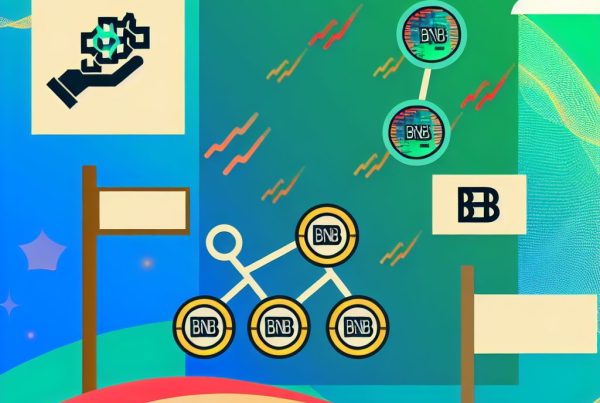How Blockchain Improves Financial Inclusion
Financial inclusion is a critical issue that affects billions of people worldwide. Despite advancements in technology, a significant portion of the global population remains unbanked or underbanked, lacking access to essential financial services. The rise of blockchain technology and the cryptocurrency industry presents a transformative opportunity to address these challenges. This article delves into how blockchain enhances financial inclusion, providing insights into its mechanisms, benefits, and real-world applications.
Understanding Financial Inclusion
Financial inclusion refers to the accessibility of financial services to individuals and businesses, particularly those in underserved communities. It encompasses a range of services, including savings accounts, credit, insurance, and payment systems. According to the World Bank, approximately 1.7 billion adults globally do not have access to formal financial services. This lack of access can hinder economic growth, perpetuate poverty, and limit opportunities for individuals and businesses.
The Role of Blockchain Technology
Blockchain technology is a decentralized digital ledger that records transactions across multiple computers. This technology is characterized by its transparency, security, and immutability, making it an ideal solution for enhancing financial inclusion. Here are some key features of blockchain that contribute to this goal:
- Decentralization: Unlike traditional financial systems, which rely on central authorities, blockchain operates on a peer-to-peer network. This reduces the need for intermediaries, lowering costs and increasing accessibility.
- Transparency: All transactions on a blockchain are visible to participants, fostering trust and accountability. This transparency can help reduce fraud and corruption.
- Security: Blockchain employs cryptographic techniques to secure data, making it resistant to hacking and unauthorized access. This security is crucial for protecting sensitive financial information.
- Accessibility: Blockchain can be accessed via the internet, allowing individuals in remote or underserved areas to participate in the financial system without the need for traditional banking infrastructure.
How Blockchain Facilitates Financial Inclusion
Blockchain technology can improve financial inclusion in several ways:
1. Lowering Transaction Costs
Traditional banking systems often impose high fees for transactions, especially for cross-border payments. Blockchain significantly reduces these costs by eliminating intermediaries. For instance, remittances sent via blockchain can cost a fraction of traditional methods, making it more affordable for individuals in developing countries to send money home.
2. Providing Access to Credit
Many individuals in underserved communities lack credit histories, making it difficult for them to access loans. Blockchain can facilitate alternative credit scoring methods by analyzing transaction data on the blockchain. This allows lenders to assess creditworthiness based on a broader range of factors, enabling more people to access credit.

3. Enabling Microfinance
Microfinance institutions can leverage blockchain to streamline their operations and reduce costs. By using smart contracts, these institutions can automate loan disbursements and repayments, making it easier for small borrowers to access funds. For example, platforms like Kiva utilize blockchain to connect lenders with borrowers in developing countries, facilitating microloans that empower entrepreneurs.
4. Enhancing Identity Verification
Many individuals in developing regions lack formal identification, which is often required to access financial services. Blockchain can provide a secure and verifiable digital identity that individuals can use to prove their identity without relying on traditional documentation. Projects like ID2020 are working towards creating decentralized identity solutions that can help millions gain access to financial services.
5. Facilitating Peer-to-Peer Transactions
Blockchain enables peer-to-peer transactions without the need for intermediaries. This is particularly beneficial for individuals in remote areas who may not have access to traditional banking services. Cryptocurrencies like Bitcoin and Ethereum allow users to send and receive funds directly, fostering economic participation.
Real-World Applications of Blockchain in Financial Inclusion
Several projects and initiatives are leveraging blockchain technology to promote financial inclusion. Here are some notable examples:
1. Stellar
Stellar is a blockchain platform designed to facilitate cross-border payments and financial inclusion. By connecting banks, payment systems, and individuals, Stellar enables fast and low-cost transactions. The Stellar Development Foundation has partnered with various organizations to provide financial services to underserved populations, particularly in Africa and Asia.
2. BitPesa
BitPesa is a payment platform that uses blockchain technology to facilitate cross-border transactions in Africa. By allowing businesses to send and receive payments in local currencies, BitPesa helps improve access to financial services for entrepreneurs and small businesses across the continent.
3. BanQu
BanQu is a blockchain-based platform that provides a digital identity and financial services to unbanked individuals in developing countries. By creating a secure digital identity, BanQu enables users to access credit, savings, and other financial services, empowering them to improve their economic situation.
4. Circle
Circle is a global financial technology firm that uses blockchain to provide payment solutions. Its platform allows users to send and receive payments in various currencies, including cryptocurrencies. Circle aims to enhance financial inclusion by making it easier for individuals and businesses to transact globally.
Challenges and Considerations
While blockchain holds great promise for improving financial inclusion, several challenges must be addressed:
- Regulatory Hurdles: Governments around the world are still grappling with how to regulate cryptocurrencies and blockchain technology. Unclear regulations can hinder the growth of blockchain-based financial services.
- Technological Barriers: Access to the internet and digital literacy are prerequisites for utilizing blockchain technology. In many regions, these barriers remain significant.
- Scalability: As blockchain networks grow, scalability becomes a concern. Solutions must be developed to ensure that blockchain can handle a large volume of transactions efficiently.
FAQs about Blockchain and Financial Inclusion
What is financial inclusion?
Financial inclusion refers to the accessibility of financial services to individuals and businesses, particularly those in underserved communities. It includes services like savings accounts, credit, insurance, and payment systems.
How does blockchain improve financial inclusion?
Blockchain improves financial inclusion by lowering transaction costs, providing access to credit, enabling microfinance, enhancing identity verification, and facilitating peer-to-peer transactions.
What are some real-world examples of blockchain improving financial inclusion?
Examples include Stellar, which facilitates cross-border payments; BitPesa, which enables low-cost transactions in Africa; and BanQu, which provides digital identities and financial services to unbanked individuals.
What challenges does blockchain face in promoting financial inclusion?
Challenges include regulatory hurdles, technological barriers, and scalability issues that need to be addressed for blockchain to reach its full potential in enhancing financial inclusion.
Conclusion
Blockchain technology has the potential to revolutionize financial inclusion by providing accessible, affordable, and secure financial services to underserved populations. By lowering transaction costs, enabling access to credit, and facilitating peer-to-peer transactions, blockchain can empower individuals and businesses to participate in the global economy. While challenges remain, the ongoing development of blockchain solutions and real-world applications demonstrates a promising path toward a more inclusive financial future.
For the latest updates on cryptocurrency news and price tracking, visit Bitrabo. Follow me on social media for more insights: X, Instagram, Facebook, Threads.
Disclaimer: The information provided in this article is for informational purposes only and should not be considered financial advice. Always conduct your own research before making investment decisions.
The Crypto Watchlist of the Week 🔎
Subscribe to receive expert-curated projects with real potential—plus trends, risks, and insights that matter. Get handpicked crypto projects, deep analysis & market updates delivered to you.


